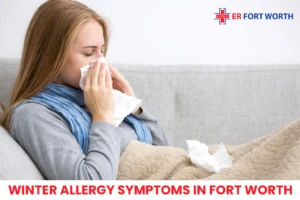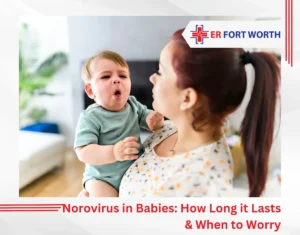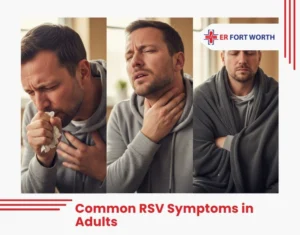HPV vs Herpes (Human Papillomavirus and Herpes) are two of the most common sexually transmitted infections (STIs) worldwide, affecting millions of people. Both can be transmitted through sexual contact and may cause genital lesions, leading to confusion between the two.
However, they are caused by different viruses and have distinct characteristics, symptoms, and health implications.
What is HPV?

Human Papillomavirus (HPV) is a group of over 200 related viruses, with more than 40 types transmitted through sexual contact. According to the Centers for Disease Control and Prevention (CDC), HPV is the most common STI in the United States, with about 42 million Americans infected and 13 million new cases annually.
Most HPV infections are asymptomatic, meaning many people don’t know they have it, and in 9 out of 10 cases, the infection clears on its own within two years without causing health problems. However, certain types of HPV can lead to:
- Genital warts: Small bumps or clusters in the genital area, which may be raised, flat, or cauliflower-shaped.
- Cancers: High-risk HPV types can cause cervical, anal, vaginal, vulvar, penile, or oropharyngeal (throat) cancers. For example, HPV types 16 and 18 are responsible for about 70% of cervical cancer cases globally.
Regular cervical cancer screenings are recommended for women aged 21–65 to detect any HPV-related issues early.
What is Herpes?
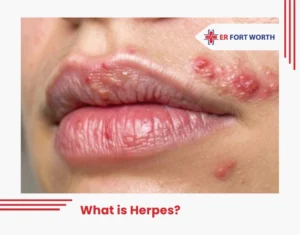
Herpes is caused by the Herpes Simplex Virus (HSV), which has two types: HSV-1 and HSV-2. HSV-1 typically causes oral herpes (cold sores around the mouth), while HSV-2 is the primary cause of genital herpes. However, both types can infect either area through oral, vaginal, or anal sex.
According to Johns Hopkins Medicine, 1 in 6 people aged 14–49 in the U.S. has genital herpes, and 40–50 million adults are affected. Once infected, the virus remains in the body for life, residing in nerve cells and potentially causing recurrent outbreaks.
Symptoms include:
- Painful blisters or sores on or around the genitals, anus, or mouth.
- Itching or tingling sensations before sores appear.
- Flu-like symptoms, such as fever or headache, are especially common during the first outbreak.
HPV vs Herpes: Key Differences
The following table summarizes the main differences between HPV vs Herpes:
Aspect |
HPV |
Herpes |
| Virus | Human Papillomavirus (HPV) | Herpes Simplex Virus (HSV-1 and HSV-2) |
| Types | Over 200 types | Two types: HSV-1 and HSV-2 |
| Symptoms | Often asymptomatic; may cause genital warts or cancers | Painful blisters or sores; flu-like symptoms during outbreaks |
| Transmission | Sexual contact, skin-to-skin contact; rarely non-sexual routes | Sexual contact, oral contact, skin-to-skin contact |
| Cure | No cure; often clears on its own | No cure; virus remains in the body |
| Vaccine | Yes (e.g., Gardasil 9, Cecolin) | No |
| Treatment | Manage symptoms (warts, precancerous lesions) | Antiviral medications (e.g., acyclovir) |
| Prevalence | Most common STI; ~42 million in U.S. | 1 in 6 aged 14–49 in U.S.; ~846 million globally |
Symptoms in Detail
HPV Symptoms
- Asymptomatic: Most people with HPV have no symptoms and may never know they’re infected.
- Genital Warts: Appear as small bumps or clusters in the genital area, which can be flesh-colored, gray, raised, flat, or cauliflower-shaped. They may itch or bleed, but are usually painless.
- Cancer Risk: High-risk HPV types can lead to cancers without immediate symptoms. These cancers develop for years or decades, making regular screenings crucial.
Herpes Symptoms
- Sores and Blisters: Painful red bumps that turn into fluid-filled blisters, which burst and form scabs, typically around the genitals, anus, thighs, or mouth (cold sores for HSV-1).
- Prodrome: Tingling, burning, or itching sensations before sores appear.
- First Outbreak: Often the most severe, lasting 2–3 weeks, with flu-like symptoms such as fever, headache, or trouble urinating.
- Recurrent Outbreaks: Less severe, triggered by stress, illness, or other factors.
How do you get HPV and herpes?
Both HPV vs Herpes are primarily transmitted through sexual contact, including vaginal, anal, and oral sex, as well as skin-to-skin contact. Key points include:
- HPV: Spread through direct contact with infected skin or mucous membranes, even without visible warts. It can also, rarely, be transmitted through non-sexual routes like contaminated surfaces or medical instruments.
- Herpes: Highly contagious, especially during outbreaks, but can spread without symptoms through asymptomatic viral shedding. HSV-1 can be transmitted via kissing or oral sex, while HSV-2 is typically spread through genital contact.
Diagnosing HPV and Herpes
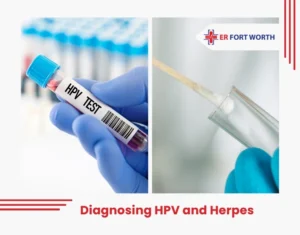
HPV Diagnosis:
- Visual Inspection: Genital warts are diagnosed by appearance.
- Pap Test: Detects abnormal cervical cells in women (ages 21–65).
- HPV DNA Test: Checks for high-risk HPV types in women 30+.
- Biopsy: Confirms HPV-related changes if abnormalities found.
- Men: No routine tests; visual check for warts.
Herpes Diagnosis:
- Physical Exam: Identifies sores or blisters.
- Swab Test: Viral culture or PCR from active sores (most accurate early).
- Blood Test: Detects HSV antibodies for past/current infection.
Prevention Strategies
HPV Prevention
- Vaccination: The HPV vaccine protects against nine high-risk HPV types that cause most HPV-related cancers and genital warts. The CDC recommends vaccination at ages 11–12, with catch-up vaccination up to age 26.
Adults aged 27–45 may consider vaccination after consulting a healthcare provider. In 2024, the World Health Organization (WHO) approved a single-dose HPV vaccine, which could improve access in low-resource settings.
- Safe Sex: Condoms and dental dams reduce the risk of HPV transmission, though they don’t cover all skin areas where the virus can spread.
- Screening: Regular cervical cancer screenings (Pap tests) for women aged 21–65 can detect HPV-related changes early.
Herpes Prevention
- Safe Sex: Using condoms and dental dams consistently can lower the risk of Herpes transmission, though they don’t fully protect against skin-to-skin contact.
- Avoid Contact During Outbreaks: Abstaining from sexual activity during active sores or prodromal symptoms reduces transmission risk.
- Antiviral Therapy: Suppressive antiviral therapy can reduce asymptomatic viral shedding by over 90%, lowering the chance of spreading Herpes to partners.
What are the Treatment Options for HPV vs Herpes?

HPV Treatment
- No Cure for the Virus: There’s no treatment to eliminate HPV, but the immune system often clears it within two years.
- Symptom Management: Genital warts can be treated with prescription medications, cryotherapy, or surgical removal. Precancerous lesions detected through screenings can be treated to prevent cancer progression.
- Screening: Regular Pap tests and HPV testing for women aged 30 and older help detect and treat abnormalities early.
Herpes Treatment
- Antiviral Medications: Prescribed drugs can shorten outbreaks, reduce their severity, and lower transmission risk. Suppressive therapy can reduce outbreaks by over 90%.
- Supportive Care: Warm baths, over-the-counter pain relievers, and keeping the affected area clean and dry can ease symptoms.
- Lifestyle: Stress management, adequate rest, and a healthy diet may reduce outbreak frequency, though evidence on supplements like lysine is inconclusive.
It’s still not too late. Visit the nearest emergency room if you are facing severe issues.
FAQs
1. Which is worse, HPV or Herpes?
Depends on the case. HPV’s cancer risk is worse long-term; Herpes’s frequent outbreaks can be more disruptive short-term. Consult a doctor for personalized advice.
2. Can HPV cause a false positive Herpes test?
No, HPV and Herpes are caused by different viruses (HPV vs. HSV). Tests (swab, PCR, or blood) for Herpes are specific to HSV and not affected by HPV. False positives are rare but can occur due to lab errors or cross-reactivity in antibody tests.
3. Does the HPV vaccine help prevent Herpes?
No, the HPV vaccine only protects against certain HPV types, not Herpes (HSV-1 or HSV-2).
4. Can you have Herpes and HPV at the same time?
Yes, you can have both, as they’re caused by different viruses. One doesn’t prevent or cause the other. Safe sex and screenings reduce risks.


